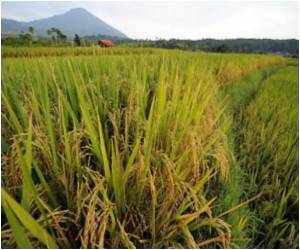
Absent new approaches to food production, climate change in this region is expected to reduce agriculture productivity by as much as 50 percent in the next three decades. And with agriculture serving as the backbone of most economies in the region, such plunging yields would shake countries to the core.
Also, farmers are being pressed to focus not just on coping with climate change but also on mitigating the impact of agriculture on greenhouse gas emissions. Farming, along with forestry and land use change, accounts for almost one third of greenhouse gas emissions globally.
In response, it is imperative that agriculture simultaneously become more productive, more resilient and more climate-friendly, according to participants at a conference on climate smart agriculture in Asia taking place this week in Bangkok.
"Climate change endangers crop and livestock yields and the health of fisheries and forests at the very same time that surging populations worldwide are placing new demands on food production," said Bruce Campbell of the CGIAR Research Program on Climate Change, Agriculture and Food Security (CCAFS).
"These clashing trends challenge us to transform our agriculture systems so they can sustainably deliver the food required to meet our nutritional needs and support economic development, despite rapidly shifting growing conditions," he stated.
Advertisement
"Now, we must think about what the research community can provide governments to guide effective action. Given the region's current state of food insecurity, climate-smart agriculture has to become the central part of Asia's adaptation strategy," he suggested.
Advertisement
Most Asian countries became food self-sufficient in the 1970s and 1980s as a result of investments made during the Green Revolution that ushered in new varieties of rice and other crops, wider irrigation and better water and crop management. Today, the mega-deltas of Asia's major rivers are the rice bowls for the world and are crucial to meeting global grain demand.
But now, the growing variability between seasons has increased pressures on water supplies, while at the same time rising sea levels are tainting freshwater supplies with high levels of salinity.
This troublesome combination is putting Asia's tremendous rice production at risk.
Rice in Asia is grown in vast low-lying deltas and coastal areas such as the Mekong River delta, which produces more than half of Vietnam's rice; the rise in sea level from climate change will change the hydrology and salinity of these fields.
Moreover, some of the major river basins-including the Chao Phraya in Thailand and the Red in Vietnam-are considered "closed" because all of the water flow has been claimed.
In South Asia, the Ganges and Indus river basins underpin the food security of well over a billion people. Yet danger signs are looming: 88 percent of Indians live in river basins with some form of water scarcity or food deficit. In Southeast Asia, despite the wider use of irrigation, approximately 75 percent of crops are still rain-fed and remain especially vulnerable to the vagaries of the climate.
The conference is being convened by APAARI, CCAFS, the World Meteorological Organization (WMO) and the United Nations Development Programme (UNDP).
Source-ANI









